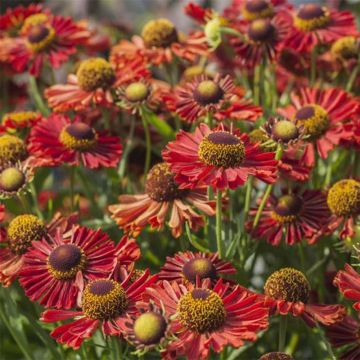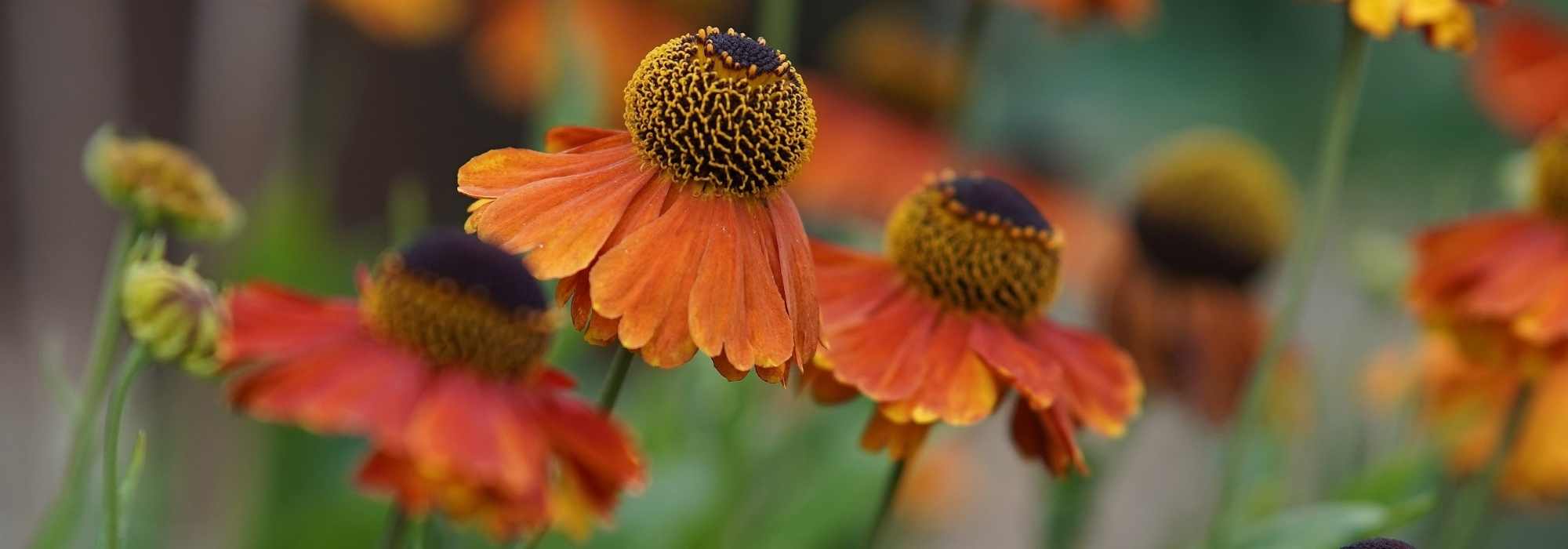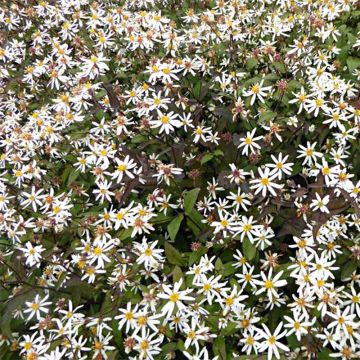

Helenium Sahins Early Flowerer


Helenium Sahins Early Flowerer


Helenium Sahins Early Flowerer
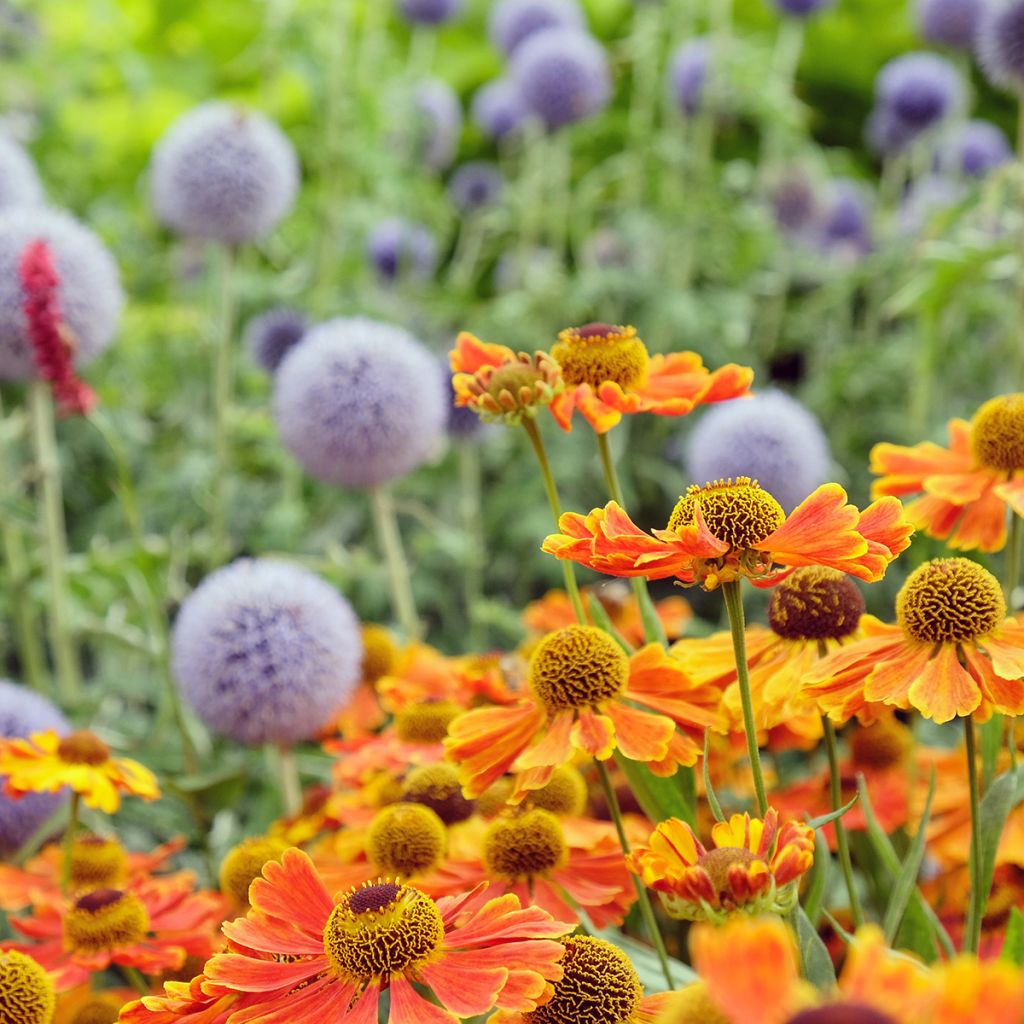

Helenium Sahins Early Flowerer
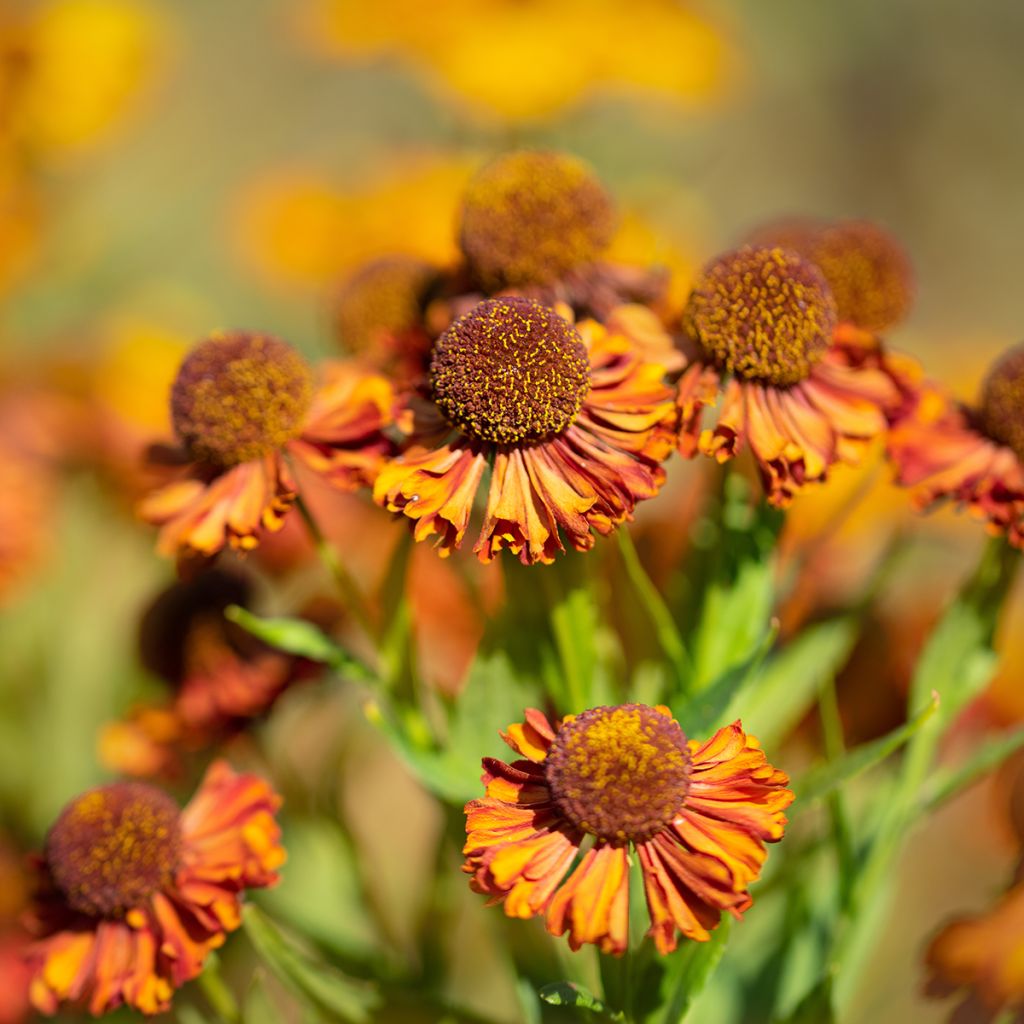

Helenium Sahins Early Flowerer
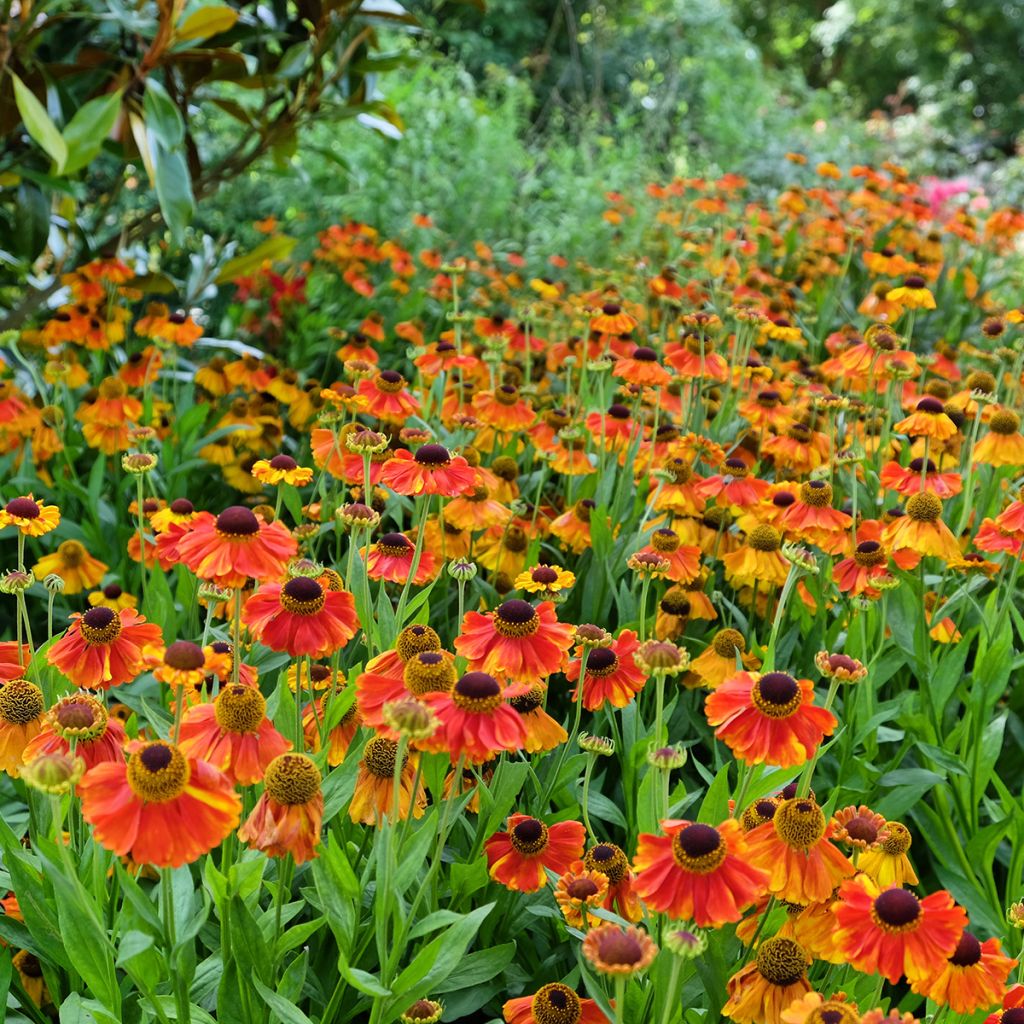

Helenium Sahins Early Flowerer


Helenium Sahins Early Flowerer
Helenium Sahins Early Flowerer
Helenium Sahin's Early Flowerer
Sneezeweed, Helen's flower, Dogtooth daisy
It's frustrating to see with every purchase that the plants sold by Promesse de Fleurs are always top-notch: pruning, freshness, quality of plastic-free packaging (cardboard + €1). Well done to all the teams.
Roro l'asticot, 06/09/2025
Special offer!
Receive a €20 voucher for any order over €90 (excluding delivery costs, credit notes, and plastic-free options)!
1- Add your favorite plants to your cart.
2- Once you have reached €90, confirm your order (you can even choose the delivery date!).
3- As soon as your order is shipped, you will receive an email containing your voucher code, valid for 3 months (90 days).
Your voucher is unique and can only be used once, for any order with a minimum value of €20, excluding delivery costs.
Can be combined with other current offers, non-divisible and non-refundable.
Home or relay delivery (depending on size and destination)
Schedule delivery date,
and select date in basket
This plant carries a 12 months recovery warranty
More information
We guarantee the quality of our plants for a full growing cycle, and will replace at our expense any plant that fails to recover under normal climatic and planting conditions.

Would this plant suit my garden?
Set up your Plantfit profile →
Description
Helenium 'Sahin's Early Flowerer', awarded by the Royal Horticultural Society, surpasses others with its flamboyant and particularly long-lasting flowering. This perennial is equipped with flower heads whose colour evolves over time, creating a symphony of yellow, orange, red, and copper under the sun. Each flower is splashed with brushstrokes, creating a sumptuous harmony. This plant is very easy to grow in full sun and in moist soil. It enlivens flower beds, and is ideal for making bouquets.
Heleniums are perennials native to North America, and are generally found at the edge of swamps. The cultivar 'Sahin's Early Flowerer' has a solid growth rate. It has an upright habit with stems reaching 100cm (39in) in height. From July to November, it presents the horticultural equivalent of a fireworks display. Countless flower heads appear at the top of the stems, resembling 6cm (2in) in diameter daisies. Each flower is unique. The centre cone is coloured in orange-brown, gradually giving way to yellow stamens. The florets on the periphery are inclined downwards. They gradually colour successively in yellow, orange, red, and copper-brown splashed with yellow-orange as they mature. This harmony of colours is complemented by beautiful green foliage. The laminae are lanceolate, with smooth margins, and the leaves are arranged alternately along the stems. This flowering accompanies bees and butterflies until winter.
Helenium 'Sahin's Early Flowerer' is a robust plant and completely hardy. It is rarely diseased and appreciates ordinary soils. Easy to grow, it thrives in sunny exposures, planted in embankments, flower beds, or even containers. Despite all these qualities, heleniums remain rare in gardens. They are the perfect complement to asters and heucheras, and can also be planted with a deciduous euonymus with sublime autumn foliage. Also consider planting them with perennial chrysanthemums or rudbeckias. In a different setting, the velvety foliage of stachys or salvias greatly enhances the warm shades of this helenium.
Helenium Sahins Early Flowerer in pictures






Flowering
Foliage
Plant habit
Botanical data
Helenium
Sahin's Early Flowerer
Asteraceae
Sneezeweed, Helen's flower, Dogtooth daisy
Cultivar or hybrid
Other Helenium
View all →Planting and care
Plant Helenium 'Sahin's Early Flowerer' in ordinary soil. Ensure it is well-drained by adding planting soil and/or well-rotted compost. Choose a sunny location for it. Water regularly after planting, then only water in case of prolonged drought once it is established. Cut back the plant once the stems have turned black. Every 2 to 3 years, you can divide the clump in spring or autumn to regenerate the plant and give it vigour.
Planting period
Intended location
Care
Planting & care advice
-
, onOrder confirmed
Reply from on Promesse de fleurs
Similar products
Haven't found what you were looking for?
Hardiness is the lowest winter temperature a plant can endure without suffering serious damage or even dying. However, hardiness is affected by location (a sheltered area, such as a patio), protection (winter cover) and soil type (hardiness is improved by well-drained soil).

Photo Sharing Terms & Conditions
In order to encourage gardeners to interact and share their experiences, Promesse de fleurs offers various media enabling content to be uploaded onto its Site - in particular via the ‘Photo sharing’ module.
The User agrees to refrain from:
- Posting any content that is illegal, prejudicial, insulting, racist, inciteful to hatred, revisionist, contrary to public decency, that infringes on privacy or on the privacy rights of third parties, in particular the publicity rights of persons and goods, intellectual property rights, or the right to privacy.
- Submitting content on behalf of a third party;
- Impersonate the identity of a third party and/or publish any personal information about a third party;
In general, the User undertakes to refrain from any unethical behaviour.
All Content (in particular text, comments, files, images, photos, videos, creative works, etc.), which may be subject to property or intellectual property rights, image or other private rights, shall remain the property of the User, subject to the limited rights granted by the terms of the licence granted by Promesse de fleurs as stated below. Users are at liberty to publish or not to publish such Content on the Site, notably via the ‘Photo Sharing’ facility, and accept that this Content shall be made public and freely accessible, notably on the Internet.
Users further acknowledge, undertake to have ,and guarantee that they hold all necessary rights and permissions to publish such material on the Site, in particular with regard to the legislation in force pertaining to any privacy, property, intellectual property, image, or contractual rights, or rights of any other nature. By publishing such Content on the Site, Users acknowledge accepting full liability as publishers of the Content within the meaning of the law, and grant Promesse de fleurs, free of charge, an inclusive, worldwide licence for the said Content for the entire duration of its publication, including all reproduction, representation, up/downloading, displaying, performing, transmission, and storage rights.
Users also grant permission for their name to be linked to the Content and accept that this link may not always be made available.
By engaging in posting material, Users consent to their Content becoming automatically accessible on the Internet, in particular on other sites and/or blogs and/or web pages of the Promesse de fleurs site, including in particular social pages and the Promesse de fleurs catalogue.
Users may secure the removal of entrusted content free of charge by issuing a simple request via our contact form.
The flowering period indicated on our website applies to countries and regions located in USDA zone 8 (France, the United Kingdom, Ireland, the Netherlands, etc.)
It will vary according to where you live:
- In zones 9 to 10 (Italy, Spain, Greece, etc.), flowering will occur about 2 to 4 weeks earlier.
- In zones 6 to 7 (Germany, Poland, Slovenia, and lower mountainous regions), flowering will be delayed by 2 to 3 weeks.
- In zone 5 (Central Europe, Scandinavia), blooming will be delayed by 3 to 5 weeks.
In temperate climates, pruning of spring-flowering shrubs (forsythia, spireas, etc.) should be done just after flowering.
Pruning of summer-flowering shrubs (Indian Lilac, Perovskia, etc.) can be done in winter or spring.
In cold regions as well as with frost-sensitive plants, avoid pruning too early when severe frosts may still occur.
The planting period indicated on our website applies to countries and regions located in USDA zone 8 (France, United Kingdom, Ireland, Netherlands).
It will vary according to where you live:
- In Mediterranean zones (Marseille, Madrid, Milan, etc.), autumn and winter are the best planting periods.
- In continental zones (Strasbourg, Munich, Vienna, etc.), delay planting by 2 to 3 weeks in spring and bring it forward by 2 to 4 weeks in autumn.
- In mountainous regions (the Alps, Pyrenees, Carpathians, etc.), it is best to plant in late spring (May-June) or late summer (August-September).
The harvesting period indicated on our website applies to countries and regions in USDA zone 8 (France, England, Ireland, the Netherlands).
In colder areas (Scandinavia, Poland, Austria...) fruit and vegetable harvests are likely to be delayed by 3-4 weeks.
In warmer areas (Italy, Spain, Greece, etc.), harvesting will probably take place earlier, depending on weather conditions.
The sowing periods indicated on our website apply to countries and regions within USDA Zone 8 (France, UK, Ireland, Netherlands).
In colder areas (Scandinavia, Poland, Austria...), delay any outdoor sowing by 3-4 weeks, or sow under glass.
In warmer climes (Italy, Spain, Greece, etc.), bring outdoor sowing forward by a few weeks.







































